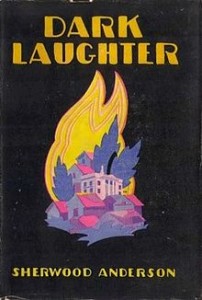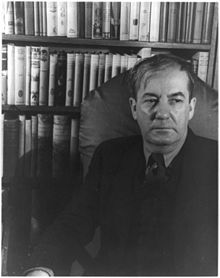 I was led to read Sherwood Anderson’s Dark Laughter by its mention in The Wettest County In America, which posited him as an investigative reporter developing a story on the crimes depicted in that book. The novel was his only best-seller, and I can only guess why. I suppose in 1925, the sex and race themes might have appeared rather racy.
I was led to read Sherwood Anderson’s Dark Laughter by its mention in The Wettest County In America, which posited him as an investigative reporter developing a story on the crimes depicted in that book. The novel was his only best-seller, and I can only guess why. I suppose in 1925, the sex and race themes might have appeared rather racy.
Bruce Dudley has left his wife, walked out on a journalism gig at a major Chicago newspaper because he thinks he’s meant for better things. He’s even changed his name to signify his new life. After a trip down the big rivers–Ohio and Mississippi–and a sojourn in New Orleans, he’s used up his nest egg. So what does this new-born spirit do but return to his old small home town on the banks of the Ohio and move into the very rooming house where he lived with his parents. He gets a job painting automobile wheels, working beside a man with one of the great names in all of literature–Sponge Martin.

So, you see that even though Bruce is our protagonist, he’s all think and no do. A writer who never puts a word on paper, and we readers are condemned to swimming around in his unexpressed mind while Anderson indulges in Joycean/Whitmanesque prosody:
The whole Middle American empire–swept by frequent and delicious rains, great forests, prairies on which early spring flowers grow like a carpet–land of many rivers running down to the slow strong mother of rivers, land to live in make love in, dance in. Once the Indians danced there, made feasts there. They threw poems about like seeds on a wind. Names of rivers, names of towns. Ohio! Illinois! Keokuk! Chicago! Illinois! Michigan!
But don’t worry, Bruce is not really our protagonist after all. We suddenly switch over to Aline, the wife of the owner of the automobile wheel factory. We’re treated to page after page of her back story, which includes an interlude in Paris, an invitation to a lesbian affair, which she declines but somewhat regrets passing on the opportunity. It’s in Paris after WWI where she meets her husband and decides to settle for becoming the wife of a rich and prominent small-town factory owner. She’s leading a pretty empty life till she spots Bruce coming out of the factory after work when she’s driven down to pick up her husband.
Thus commences an almost Chaucerian courtly love romance, the kind with small gestures and slow and irritating advancement. It’s obvious what’s going to happen, so we feel no suspense or dramatic tension at all. And, of course, we’re not privileged to be present at the moment it happens. Instead, we meet Aline the morning after as she says to herself “It happened.” Not only are we not present at the consummation, but there is no scene whatsoever between Bruce and Aline. We never hear another word out of his mouth. Not even when they walk away together, she pregnant with his child, leaving her poor husband desolate.
And, the final insult–we are left in the end with that same husband. A character we scarcely know, but whom we have been led to dislike and even detest. A weak man who knew of his wife’s affair but did nothing about it.
I admit to skimming large portions of Dark Laughter once I became irritated at how long it was taking Anderson to get Bruce and Aline together. Believe me, I’m not sorry I did. Nice to meet you, Sherwood, but I think I’ll just move on down the line, now.

